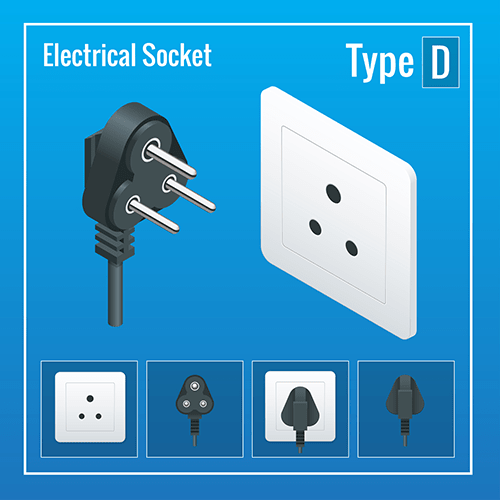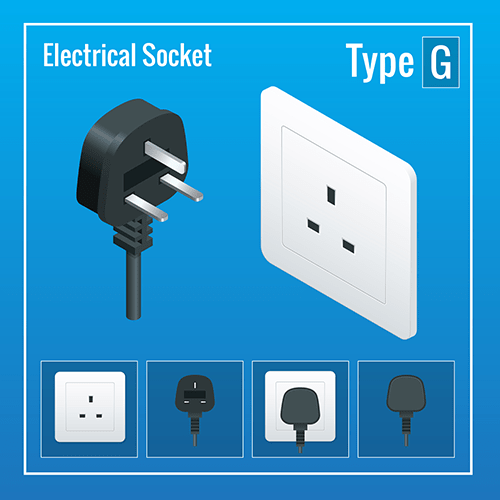It will be difficult to find your way through the multitude of electric plugs and sockets/outlets that are available in the country where you planning to travel. Tmulti-voltages and plugs will make you confusing if you want to travel to another
The Electricity in Zimbabwe :
- The standard voltage is: 220 V
- Standard frequency is: 50 HZ
- The power plugs types are : D and G
Power plugs and sockets in Zimbabwe
The power plugs and sockets used in Zimbabwe are of types D and G. Check out the following pictures :
- Type
D: This plugtype has three round pins in a triangular pattern is mainly used in India, Sri Lanka, some of theAfrican countries and Nepal. And this socket only works with plug typeD. - Type G: Is which has three rectangular pins in a triangular pattern, this plug type is of a British origin. This plug socket only works with plug G.
Voltage and frequency in Zimbabwe
The standard voltage in Zimbabwe is 220 V and the standard frequency is 50 HZ, you can use all your appliances in Zimbabwe if the standard voltage in your own country is between 220V-240V as in Europe, United Kingdom, the most countries in Africa and Asia, and Australia.
But, if the standard voltage in your country is in the range of 100V-127V as in Canada, the United State and countries in South America you surely need a voltage converter in Zimbabwe. Because without a converter you will damage your electronic appliances.
And If the frequency ( 50 HZ ) is
The converter and transformer in Zimbabwe
You may need to use a voltage converter or transformer while you are in Zimbabwe because the voltage can differ from country to another. And if the standard frequency is different,
the normal operation of an electrical appliance may also be affected. Is like, a 50Hz clock may run faster on a 60Hz electricity supply.
The converters and transformers perform a similar function, but their applications differ. Converters are usually used with appliances that operate for a short duration (1-2hours), whilst most transformers can be used alongside appliances that operate continuously.
- And the most voltage converters and transformers come supplied with plug adaptors,
- so you may not need to take a separate travel adaptor
. All converters and transformers will have a maximum power rating (AMPS or WATTS) , soyou need to make sure that any appliance you intend to use does not exceed this rating.


